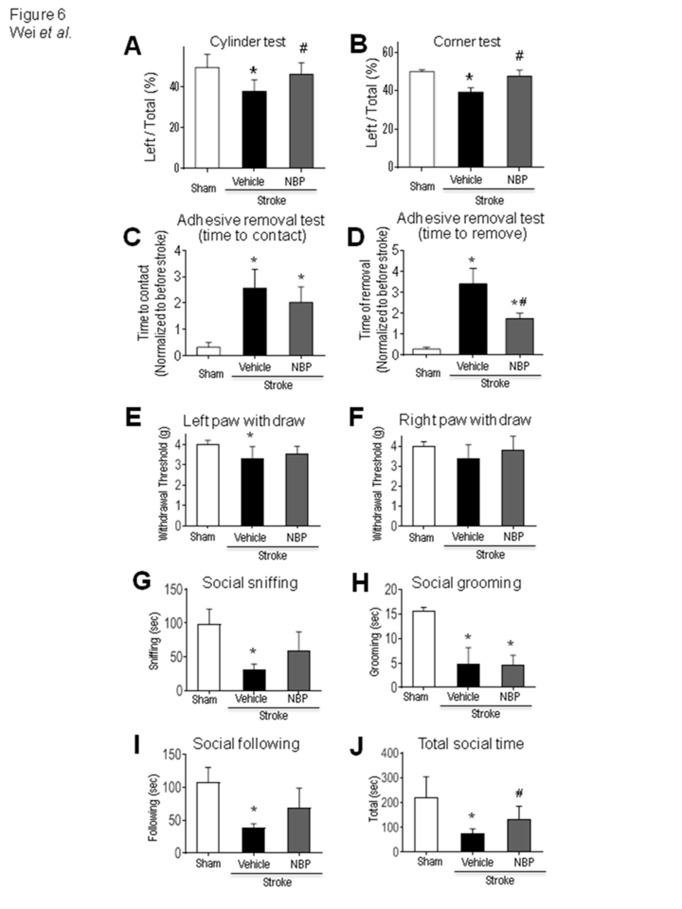Figure 6.
NBP attenuated acute and chronic functional and behavioral deficits after stroke. Functional tests were performed at 3 and 14 days after stroke to evaluate acute and long-term effects of NBP treatments. (A) and (B) Three days after the ischemic insult, cylinder test (A) and corner test (B) revealed an early functional benefit, consistent with the acute protective effect of NBP. One-way ANOVA followed by Bonferroni test; *p<0.05 vs. sham, # p<0.05 vs. stroke + vehicle, N=8 per group. Data are shown as mean±SEM. Fourteen days after stroke, sensorimotor function and social behaviors were tested for long-term effects of repeated NBP daily treatments. (C) The adhesive removal test assessed sensorimotor function. The time needed for stroke animals to feel (time to contact) the sticky dot from the left paw corresponding to the right cortical damage was significantly increased compared to sham animals. One-way ANOVA, F(2,16)=18.35, *p<0.05 vs. sham. (D) The time for the animal to remove the dot (time to remove) was also significantly prolonged. The NBP treatment significantly shortened the time in this test. One-way ANOVA, *p<0.05 vs. sham, #p<0.05 vs. stroke vehicle, N=6 in sham group, N=8 in stroke + vehicle group and stroke + NBP group, respectively. (E) and (F) Von Frey forepaw withdraw test. Stroke mice show decreased withdrawal threshold in the forepaw corresponding to the damaged sensorimotor cortex while mice received NBP did not have this reduction. *p<0.05 vs. sham. N=8 per group. (G) - (J). Time spent in social sniffing, social grooming, social following, and total social time were significantly reduced in the stroke mice. The stroke insult caused great reductions in all these social activities, while the social sniffing and social following were not significantly deteriorated in the NBP group compared to sham controls. The NBP treatment significantly improved the total social time of all social activities compared to stroke vehicle controls (J). *p<0.05 vs. sham, #p<0.05 vs. stroke vehicle. N=10-12 per group.

